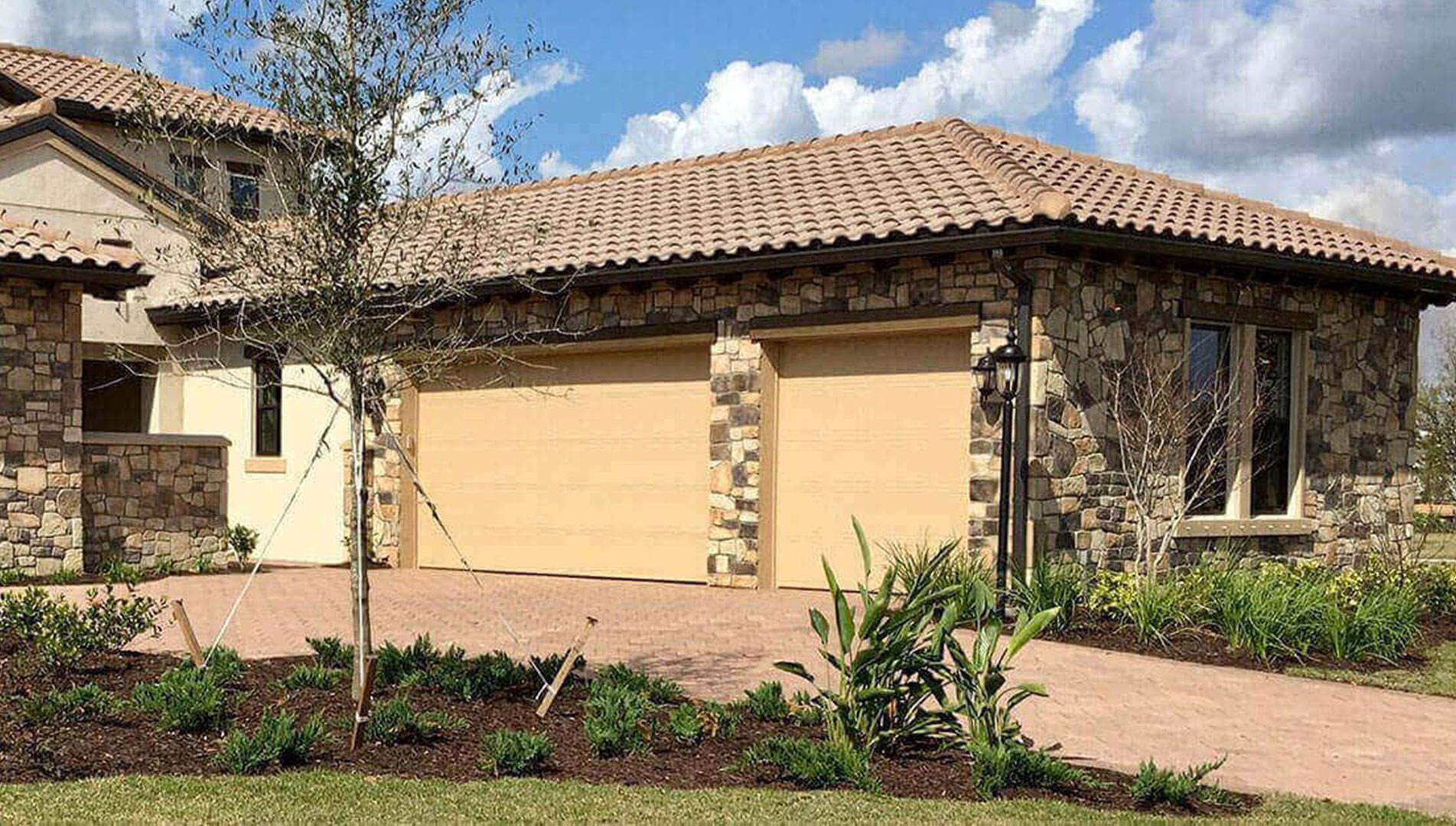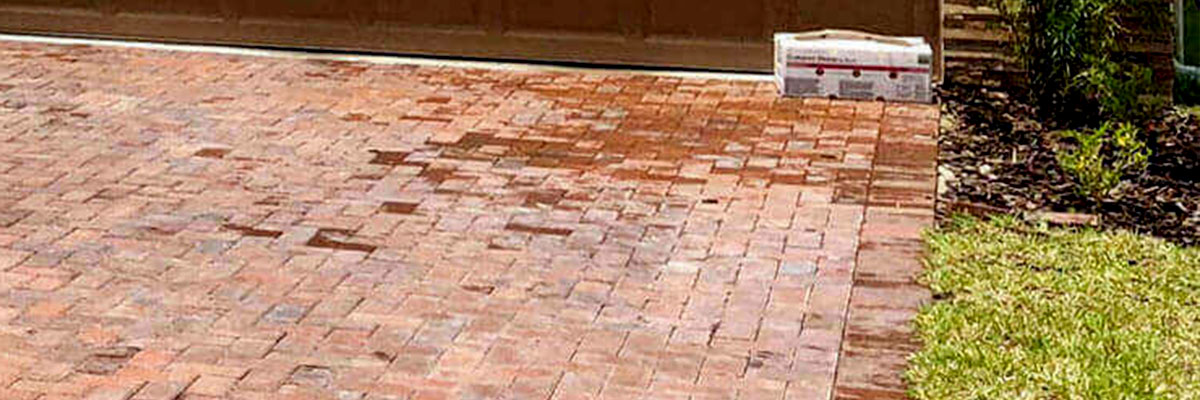Wondering What to Put Under Your Brick Paver Installation?
From breathtaking patios to divine outdoor kitchens and stone pool surrounds, every successful brick paver installation begins with creating the perfect foundation.
Doing so will prevent your investment from shifting or sinking over time.
Here’s the million-dollar question:
What do you put under brick pavers?
Without the proper depth, materials, and installation techniques, you could be left with a costly disaster that creates an eyesore in your yard.
Our blog looks at what to put under brick paver installations, when to use these materials, and how to best prepare different types of ground.
First, let’s break down your choices in bedding material for pavers.
Brick Paver Installation on Sand
Brick paver installation on sand is most appropriate for pedestrian use, although it can be used for vehicles when special preparations are undertaken.
This type of concrete sand is the ideal base material for paver application for use in:
- Patios
- Paver pathways and walkways
- Sidewalks
- Outdoor fireplaces
- Outdoor kitchens
- And more!
Using bedding sand allows for proper drainage, as this material doesn’t trap excessive amounts of moisture beneath the stone.
Gravel Paver-Base Installation
Installing a gravel paver base is another option that allows for superior drainage and is suitable for many different brick paver project types.
We recommend sitting down with your paver-base installation contractor to examine the pros and cons of choosing this material, specific to the type of property and the project you have in mind.
Installing Brick Pavers Over Concrete
The advantages of installing brick pavers over concrete are considerable, as the potential for sinking and movement decreases significantly.
However, the price of including concrete in your project could increase your budget.
This method, also known as Screed, is ideal for high traffic areas like roadways, parking areas, and driveways that see a lot of vehicle traffic.
Your chosen brick paver installation technician should provide you with all the information needed to make informed decisions that align your goals with your budget.
If you feel like your contractor can’t answer your inquiries in full, we recommend getting a second opinion for an industry leader like ourselves.
Brick-Paver Installation Specifications: Get Ground Ready
The key to creating a stunning and durable hardscape is always found in the level of attention paid to preparing the ground.
The most important thing to remember is that bricks must be laid on a stable, level, and firm foundation to produce the most aesthetically pleasing looks and the best value.
How Ground Composition Factors In
It’s vital to determine which type of ground and soil you are working with before selecting ground depth and base depth.
Ensuring proper drainage is planned into your brick paver installation begins with knowing if you are dealing with clay, rocks, natural sand, and other types of earth. It also helps with planning depth to accommodate drainage needs.
For example, ground composed mainly of clay will need to be excavated deeper to make sure proper drainage is possible.
Ground and Base Depth Matters
The depth at which a base must be started depends on the thickness of the pavers you select, the type of soil and ground at the site, and the planned usage of your new hardscape installation.
The general rule of thumb for ground and base depth is approximately 4-6 inchesfor pedestrian pathways and walking areas and 8-12 inches for driveways. However, we recommend working with a seasoned brick paver installer to ensure the conditions are just right and you get the best results.An experienced hardscaping contractor will be able to inspect your ground type, take into account the type and style of paver you’ve selected, and determine the perfect area to dig.
Trust us when we say this step is worth the money because your entire investment rests on getting this right.
Paver Installation: Slope and Drainage Requirements
Determining the slope needed to direct the flow of water away from your home is a critical element in achieving excellent drainage.
In some cases, the existing soil quality will be too poor to provide optimal drainage conditions. Installing further measures should be considered.
Speak to a qualified paver installation contractor to learn more about achieving the best drainage conditions on your property.
Laying Pavers
Laying pavers the right way is a technique we’ve honed over years of combined experience, industry training, and certifications.
As we mentioned above, a large percentage of the longevity and success of any paver project is directly linked to how well the surface has been prepped.
Paver layout is dependent on the type of paver you select and the dimensions of the hardscape infrastructure you intend to install.
Working with a licensed paver installer will ensure your bricks are laid out exquisitely, proportions and patterns come together seamlessly, and your bricks stay in place for many years.
Is Paver Sealant Necessary?
We recommend paver sealant to prevent your investment from becoming stained.
In this way, you can keep pool decks, patios, outdoor kitchens, driveways, and walkways looking as pristine as they were when first installed.
Since not all paver sealants were made equal, and the frequency of application should be customized to your bricks and preferences, we recommend consulting with an expert to ensure you’re getting the most value.
Typically, sealant can be applied one week after installation if it is not film-forming. However, we suggest waiting 30 days before application when choosing a film-forming seal.
How to Prevent Weeds from Interfering with Brick Pavers
It may be tempting to consider applying a plastic underlayment to the excavated ground to prevent weeds from interfering with brick pavers.
Don’t do it.
While it may seem like a good idea at the time, plastic is an excellent candidate for trapping water and causing problems.
Steer clear and put your trust in our proven methods.
The secret to preventing weeds from infiltrating a hardscape is to simply add enough masonry sand to fill the joints between each paver, making it difficult for seeds to get in and take root in the first place.
Conclusion: Pave the Way to Paver Installation Success by Implementing These Tips
Now that you're familiar with the steps needed to create a level and long-lasting brick paver masterpiece, are you ready to get your next project underway?




